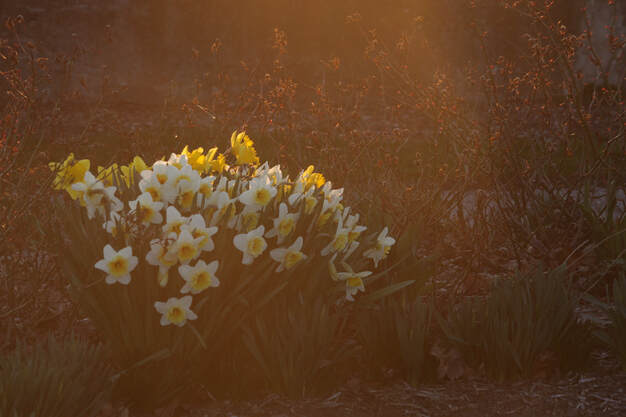|
The following is an addition to works I have been assembling the past two weeks that consider our work in the larger Buffalo Horticulture community in the context that is considering “what work is essential,” during the COVID-19 pandemic, as we all distance ourselves during “NY Pause.” Just yesterday I put together a quick design study for the owners of a corner lot house in the Elmwood Village. The study was to consider possible solutions and feasibility for a lawn and yard - the public space between the house's foundation and the curb - that is currently spotty patches of fescue, dirt, moss, weeds, and a well established colony of Lesser Celandine. There are three street trees around the house, two of which were Norway Maples that cast a heavy shade, occupy the root zone, and evaporate water out of the soil not leaving any to share with other plants. As these street trees have grown over the past 30 to 40 years or so, their increasing dominance of resources has led the traditional turfgrass of the lawn below to decline. “The Lawn” in our garden culture refers to the maintained space of turfgrass, while I believe in the English tradition it refers to the garden space as a whole, including gardens and turf. This is important to distinguish because here “lawn” specifically points to a plant, grass, that is grown in large uniform quantities over an expanse. Whereas, another use, one always used by clients here in Buffalo that move in from out of the country, “lawn” is used to point to a space, “the front lawn.” I will be asked to work on the lawn, but the ornamental plantings of the foundation, not the grass. As I considered the costs and how we may consider the value of this project I thought about what kind of expenses we may, without question, be willing to incur for other surfaces and projects in a house - costs of flooring, finishing walls, basement floors, roofs, etc. “Why do we privilege those surfaces so much? Why do we spend $10 a square foot on those surfaces but are only willing to spend $6 per square foot in lawn and garden.” This soon raised the question of “the cosmetic,” a trigger word right now in landscaping as with the “NY Pause” program that responds to the pandemic, we have deemed landscape maintenance “essential,” but no new installations, “nothing cosmetic.” This project brings some of our thinking about landscaping, installations, and the cosmetic into conflict. To think of this potential new lawn as cosmetic goes along with a thinking that we are here engaged in the practice of “having nice things,” and so we will install a new lawn to give us all the “extras” - “it just looks nice” - that come with that nice thing. This cosmetic sense opposes what is seen as essential. Now is not the time to make “something more.” Now is a time for maintenance, protect the values you have. Bonnie Guckin and Tom Draves have both said this to me: “as if we are ever just going around doing things that aren’t essential.” This sentiment is trying to get us outside of a dominant way of thinking, outside of “make new/maintain.” To me this is the conflict with this “lawn” project. I see it as lying completely outside of this dichotomy. It is pointing towards what Bonnie, Tom, and I are continuously speaking of in this “NY Pause,” pandemic, “only essential work” situation. The work we do is thought of as only “cosmetic.” I think this lawn project helps us get towards an articulation of our problem, a difficult place to get to as it is outside everyday and dominant language and thinking. A lot of the spaces we are being called upon to look at right now are not for people who want to make something extra, something new, so they can have nice things (thinking of a Taylor Swift song), but they recognize this lawn space as less than healthy and as part of their home: it is in their domain of care giving. And here, to do “new work” on this lawn, isn’t “new work,” but caring for and attending to the existing space. It thinks in a world without maintenance and in a world of caring for. It is non-essential work. These are the spaces of critique opened up in the pandemic. Comments are closed.
|
Matthew DoreLandscape designer and Proprietor of Buffalo Horticulture Archives
April 2020
Categories |
Telephone(716)628.3555
|
|


 RSS Feed
RSS Feed